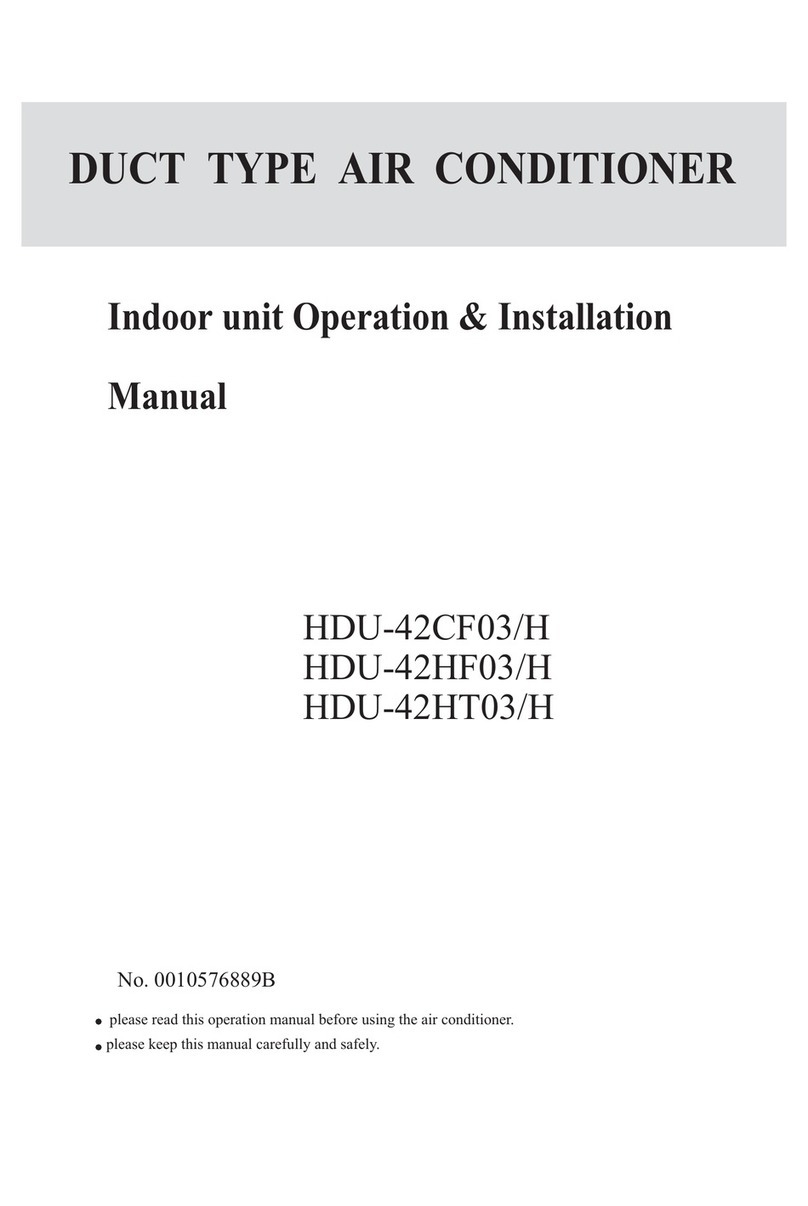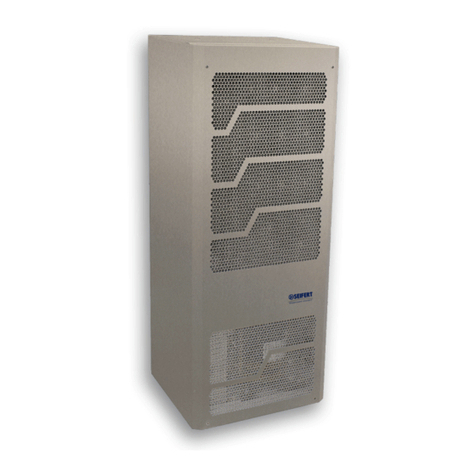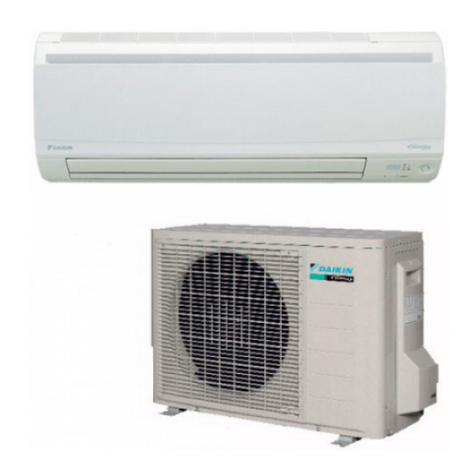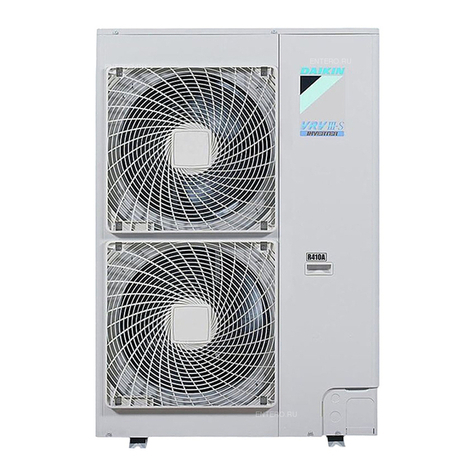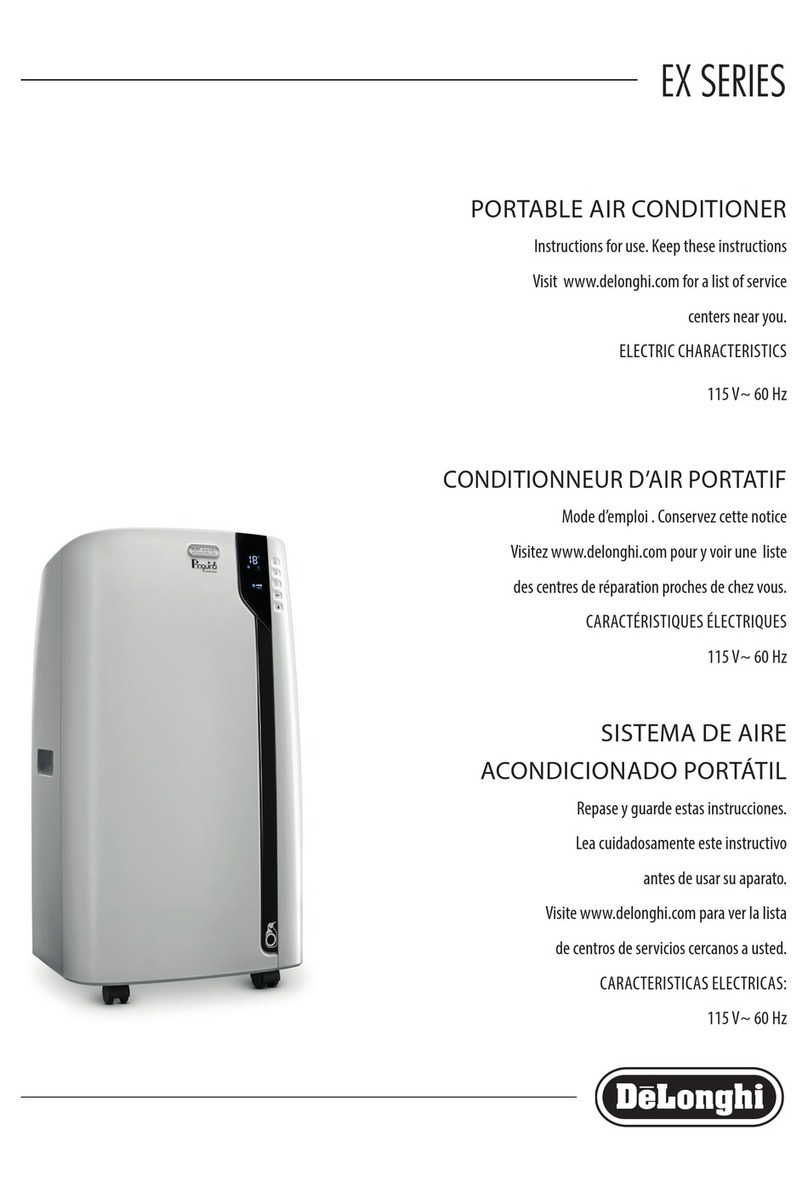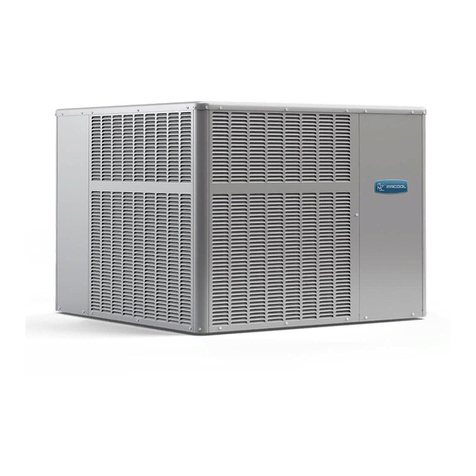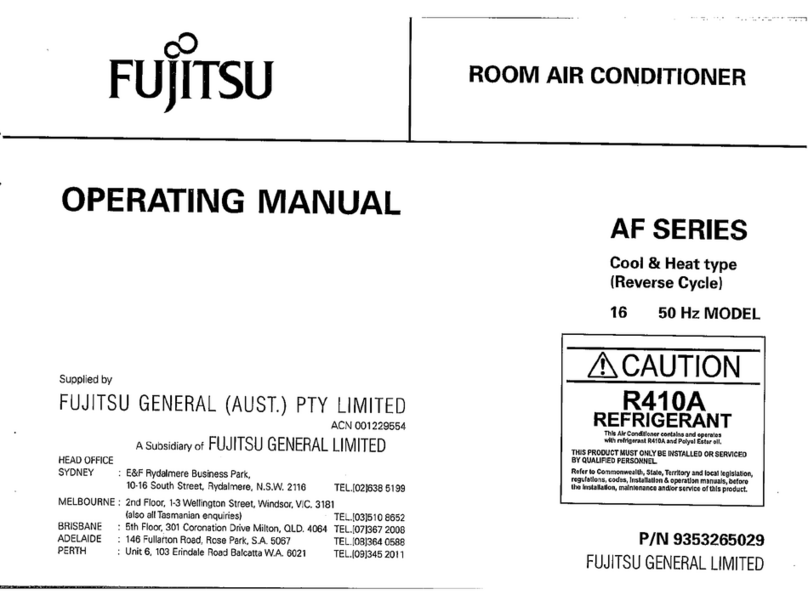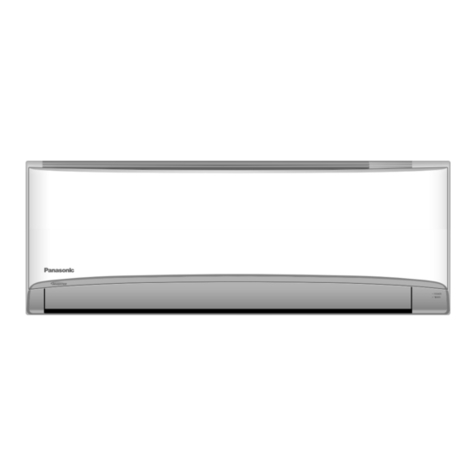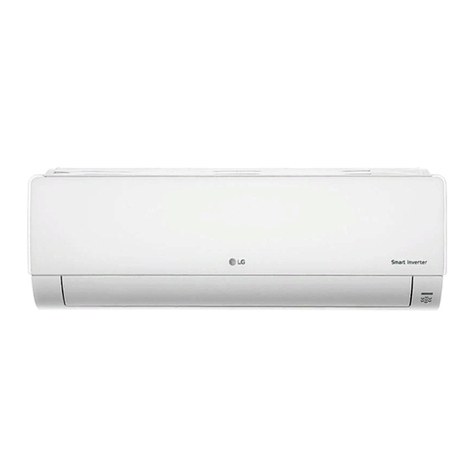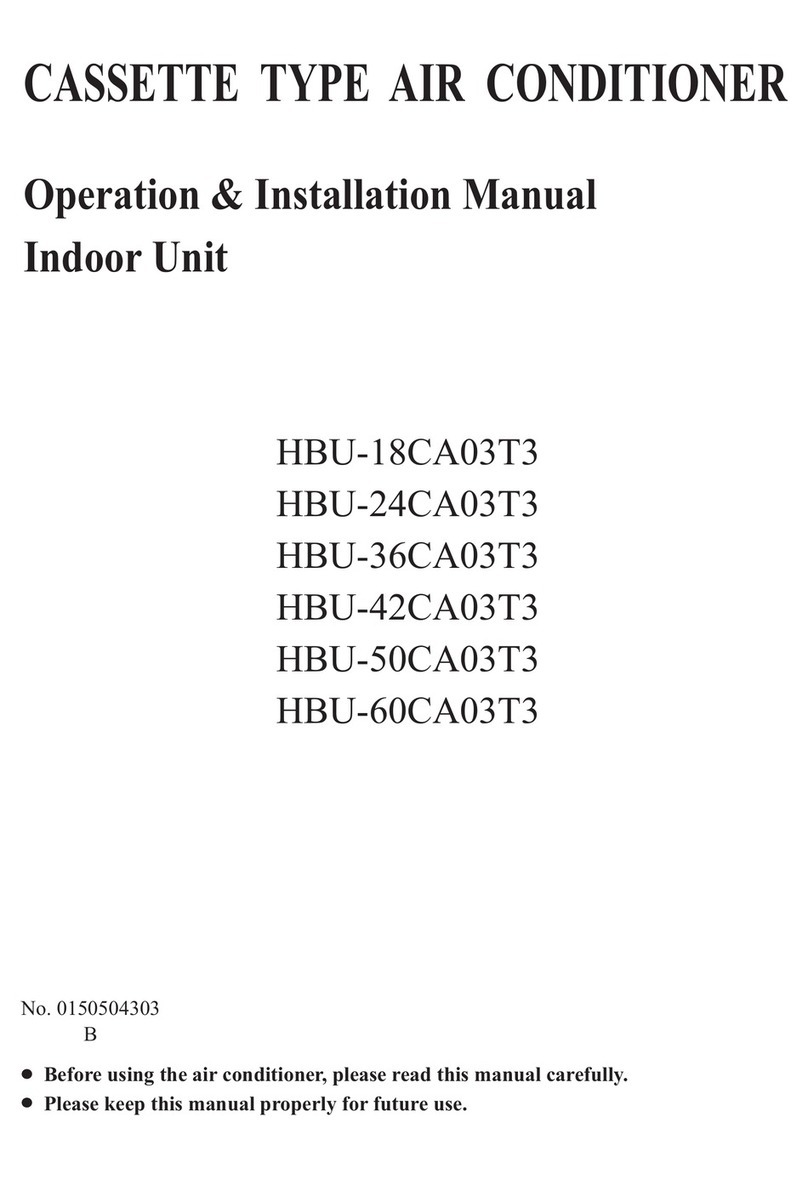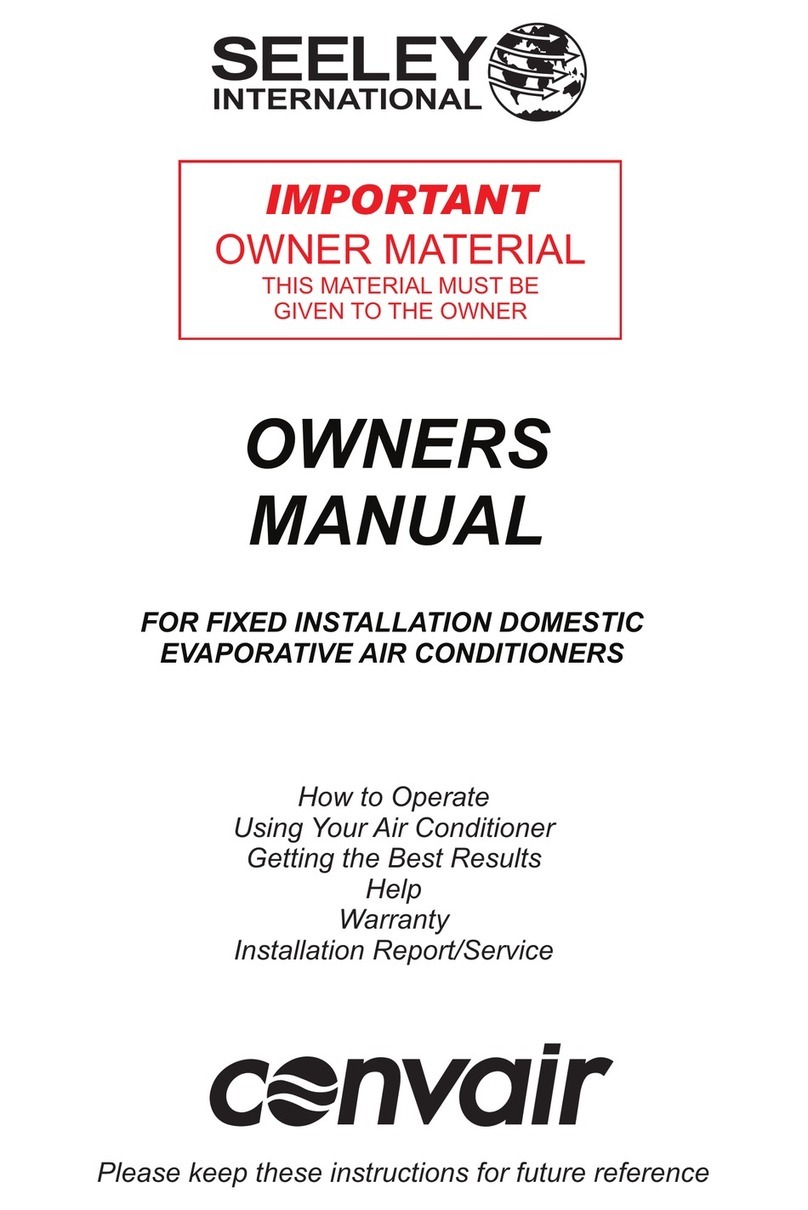ElectiQ iQool9 User manual

Before using your air conditioner, please read
this manual carefully and keep it for future reference.
ROOM AIR CONDITIONER
Before using your air conditioner, please read
this manual carefully and keep it for future reference.
ROOM AIR CONDITIONER
Before using your air conditioner, please read
this manual carefully and keep it for future reference.
ROOM AIR CONDITIONER
Before using your air conditioner, please read
this manual carefully and keep it for future reference.
ROOM AIR CONDITIONER
Before using your air conditioner, please read
this manual carefully and keep it for future reference.
ROOM AIR CONDITIONER
Before using your air conditioner, please read
this manual carefully and keep it for future reference.
ROOM AIR CONDITIONER
Before using your air conditioner, please read
this manual carefully and keep it for future reference.
ROOM AIR CONDITIONER
Before using your air conditioner, please read
this manual carefully and keep it for future reference.
ROOM AIR CONDITIONER
Before using your air conditioner, please read
this manual carefully and keep it for future reference.
ROOM AIR CONDITIONER
Before using your air conditioner, please read
this manual carefully and keep it for future reference.
ROOM AIR CONDITIONER
Before using your air conditioner, please read
this manual carefully and keep it for future reference.
ROOM AIR CONDITIONER
Before using your air conditioner, please read
this manual carefully and keep it for future reference.
ROOM AIR CONDITIONER
Before using your air conditioner, please read
this manual carefully and keep it for future reference.
ROOM AIR CONDITIONER
Before using your air conditioner, please read
this manual carefully and keep it for future reference.
ROOM AIR CONDITIONER
Read This Manual
Keep this manual where the operator can easily
find them.Inside you will find many helpful hints
on how to use and maintain your air conditioner
properly. Just a little preventative care on your
part can save you a great deal of time and money
over the life of your air conditioner. You'll find many
answers to common problems in the chart of
troubleshooting tips. If you review the chart of
Troubleshooting Tips first, you may not need
to call for service.
INVERTER SPLIT-TYPE
iQool9
iQool12
iQool18
iQool24

11
DISPOSAL: Do not dispose of this product as unsorted municipal waste. Collection of such waste
separately for special treatment is necessary.
It is prohibited to dispose of this appliance in domestic household waste. For disposal, there are
several possibilities:
A) The municipality has established collection systems, where electronic waste can
be disposed of at least free of charge to the user.
B) When buying a new product, the retailer will take back the old product at least free of charge.
C) The manufacturer will take back the old appliance for disposal at least free of charge to the user.
D) As old products contain valuable resources, they can be sold to scrap metal dealers.
Wild disposal of waste in forests and landscapes endangers your health when hazardous
substances leak into the ground-water and find their way into the food chain.
When using this air conditioner in the European countries, the following informations must
be followed:
This appliance can be used by children aged from 8 years and above and persons with
reduced physical, sensory or mental capabilities, or lack of experience and knowledge if they
have been given supervision or instruction concerning use of the appliance in a safe way and
understand the hazards involved. Children shall not play with the appliance. Cleaning and user
maintenance shall not be made by children without supervision.
READ BEFORE OPERATION

22
CONTENTS
SAFETY PRECAUTIONS
NAMES OF PARTS
OPERATING INSTRUCTIONS
CARE AND MAINTENANCE
TROUBLESHOOTING TIPS
Warning .....................................................................................................................................3
Caution ......................................................................................................................................4
.
Indoor unit ..................................................................................................................................5
outdoor unit ................................................................................................................................5
Display window ..........................................................................................................................5
Operating temperature................................................................................................................6
Manual operation .......................................................................................................................6
Airflow directional control ...........................................................................................................7
How the air conditioner works ...................................................................................................8
Special functions .......................................................................................................................9
Before maintenance...... ...........................................................................................................11
Cleaning the unit.......................................................................................................................11
Cleaning the air filter and air freshening filter ..........................................................................11
Preparation for extended non-operation....................................................................................12
Pre-season inspection...............................................................................................................12
Troubleshooting tips..................................................................................................................13
Troubleshooting guide .............................................................................................................14

33
SAFETY PRECAUTIONS
To prevent injury to the user or other people and property damage, the following instructions
must be followed. Incorrect operation due to ignoring of instructions may cause harm or damage.
The seriousness is classified by the following indications.
This symbol indicates the possibility of death or serious injury.
Meanings of symbols used in this manual are as shown below.
WARNING
Be sure to follow the instructions.
Strictly prohibited.
CAUTION This symbol indicates the possibility of injury or damage to property.
Do not extend the cable and never use
multiple plugs. A poor electrical connection,
poor insulation or voltage which is higher
than permitted can cause fire.
Do not expose your body directly to the cool
air for prolonged period.
Never poke fingers, sticks or other objects
in the air inlet and outlet vents.
Never attempt to repair, relocate, modify the
air conditioner yourself. Always contact your
service provider if required.
Never pull the plug out by pulling on the
cable. Hold the plug firmly and pull it out of
the plug socket, otherwise there is a risk of
damaging the cable.
Do not operate your air conditioner in a wet
room such as a bathroom or laundry room.
Remove all dirt from the power plug and
plug it firmly. Soiled plugs can cause fire
or an electric shock.
In the event of any abnormalities such
as smell of burning, immediately switch
off the device and pull the plug. Contact
your service provider.
Always switch off the device and pull the
plug before you start to clean it.
Use specified power cord.
Contact the authorized installer for
installation of this unit.
Contact an authorized service technician
for repair or maintenance of this unit.
This appliance is not intended for use by
persons(including children) with reduced
physical, sensory or mental capabilities, or
lack of experience and knowledge, unless
they have been given supervision or
instruction concerning use of the appliance
by a person responsible for their safety.
Children should be supervised to ensure
that they do not play with the air
conditioner.
WARNING

44
Never actuate any switches with a wet
hand. It may cause an electric shock.
Never use the device for any other
purpose than the intended use. Never
place food, precision instruments, plants,
animals, paint, etc. on the unit.
Do not expose plants or animals directly
to the air flow.
Never clean the air conditioner with water.
Never use combustible cleaning agents
as these could cause a fire or deformation.
Never place any burning objects close to
the device if they could be directly affected
by the emitted air.
Never step onto the outdoor unit and
never place anything on it.
Never use an unsteady or rusty base.
Never install the air conditioner in places
where combustible gas can be emitted.
Emmitted gas may collect and cause an
explosion.
Never allow the air conditioner to run for
too long with the doors or windows open,
or if the humidity is very high.
If the air conditioner is to be used in
conjunction with other heaters, the air
should be refreshed periodically, otherwise
there is a risk of lack of oxygen.
Always pull out the power plug if the unit
is not going to be used for any lengthy
period of time. Collections of dust can
cause fire.
Always switch off the air conditioner and
pull out the power plug during a storm,
otherwise, electrical parts may get
damaged.
Check that the drainage line is correctly
connected. If not, water will escape.
Check that the condensation water can
run off unhindered. It may cause water
damage if the condensation water cannot
run off properly.
The air conditoner must be earthed in
accordance with the local codes.
For electrical safety purposes we
recommend that you install an earth-
leakage circuit-breaker.
If the power cord is damaged, it must be
replaced by the manufacturer, its service
agent or similary qualified persons in order
to avoid a hazard.
SAFETY PRECAUTIONS
CAUTION

55
NAMES OF PARTS
8. Connecting pipe
9. Connecting cable
10. Stop valve
Outdoor unit
Outdoor unit
Display window
Display window
NOTE:
All the pictures in this manual are for
explanation purposes only. The actual shape
of the indoor unit you purchased may be slight
different on front panel and display window.
The actual shape shall prevail.
Air inlet(rear)
Air inlet(side)
Air inlet
Air outlet
Air outlet
1. Front panel
2. Air inlet
3. Air filter
4. Air outlet
5. Horizontal air flow grille
6. Vertical air flow louver(inside)
7. Display window
Indoor unit
Indoor unit
Names of parts
4
3
5
2
6
1
9
10
8
7
Digital display:
Displays the temperature settings when the
air conditioner is operational.
Displays the room temperature in FAN mode.
Displays the self-diagnostic codes.
Displays for three seconds when Timer
ON, Fresh, Swing, Turbo or Silence feature is
activated.
Displays for three seconds when Timer
OFF is set.
Displays for three seconds when Fresh,
Swing, Turbo or Silence feature is cancelled.
Displays under defrosting operation.
Displays when anti-cold air feature is
activated under heating mode.
Displays during self clean operation(if
applicable).
O
Displays under 8 C heating operation(if
applicable).
,
,
,
,
,
,
,
,
,
,
,
,
,
,
Energy saving display:
WIFI control display:
Displays when the energy saving
feature is activated.(Not available
when the unit does not have energy
saving mode.)
Displays when the WIFI control
feature is activated.(Not available
when the unit does not have this
function.)

66
OPERATING INSTRUCTIONS
NOTE:
A guideon using the infrared remote isincluded in this literature package.
Units are equipped with a switch to run emergency operation mode. It can be accessed by
opening the front panel. This switch is used for manual operation in case the remote controller
fails to work or maintenance necessary.
Manual operation
Operating temperature
Manual switch
AUTO/COOL
Mode
Temperature
Room temperature
Outdoor temperature
1. Optimum performance will be achieved within these operating temperatures.If air
conditioner is used outside of the above conditions, certain safety protection features
might come into operation and cause the unit to function abnormally.
2. If the air conditioner runs for a long time in cooling mode and the humidity is high(over
80%) , condensed water may drip out of the unit. Please sets the vertical air flow louver to
its maximum angle (vertically to the floor), and set HIGH fan mode.
Suggestion: For the unit adopts an Electric Heater, when the outside ambient temperature
OO
is below 0 C(32 F), we strongly recommend you to keep the machine plugged in order to
guarantee it running smoothly.
NOTE:
Cooling operation Heating operation Drying operation
-15 50 5 122
For the models with low
temperature cooling system
0 50
32 122 -15 30
5 86
0 50
32 122
OO
17 C~32 C
OO
(62 F~90 F)
OO
0 C~30 C
OO
(32 F~86 F)
OO
10 C~32 C
OO
(50 F~90 F)
Open and lift the front panel up to an angle
until it remains fixed with a clicking sound.
One press of the manual control switch will
lead to the forced AUTO operation. If press
the switch twice within five seconds, the unit
will operate under forced COOL operation.
Close the panel firmly to its original
position.
This switch is used for testing purposes
only. Please do not use it unless necessary.
To restore the remote controller operation,
use the remote controller directly.
CAUTION:
1
3
2
NOTE: The unit mustbe turned offbefore
operating the manualcontrol button. If the
unit is operational,continue pressing the
manual control buttonuntil the unit is off.

77
Airflow directional control
OPERATING INSTRUCTIONS
Range
Range
Deflector rod
Adjust the air flow direction properly, otherwise it might
cause discomfort or cause uneven room temperatures.
Adjust the horizontal louver using the remote controller.
Adjust the vertical louver manually.
Adjusting vertical air flow(Up--Down)
Perform this function while the unit is in operation.
Use the remote controller to adjust the vertical air flow
direction. The horizontal louver can move slightly for each
press, or continuously swing up and down automatically.
Please refer to the REMOTE CONTROLLER
OPERATION MANUAL for details.
Adjusting horizontal air flow (left - right)
Move the deflector rod manually to adjust the air flow
in the direction you prefer.
IMPORTANT:Do not put your fingers into the panel of
blower and suction side.The high-speed fan inside may
cause injury.
Do not operate the air conditioner for long periods with
the air flow direction set downward in cooling or
dehumidifying mode. Otherwise, condensation may
occur on the surface of the horizontal louver causing
moisture to drop on to the floor or on furnishings.
After a quick restart, the horizontal louver may remain
static for approximately 10 seconds.
Open angle of the horizontal louver should not be set
too small, as COOLING or HEATING performance may
be reduced due to too restricted air flow area.
Do not move the horizontal louver manually, otherwise
the horizontal louver will be out of sync. Please cease
operating, unplug power for a few seconds,then restart
the air conditioner.
CAUTION
,,
,,
NOTE:
Best working conditions(the energy efficiency can be
affected if not set under these conditions):
The best angle of louvers is the default angle of cooling
mode
The best way of setting the angle of louvers at heating
mode is to run the unit for 5 minutes and then use the
remote controller to set the louvers at the default angle
of cooling mode.

88
OPERATING INSTRUCTIONS
Basic operation modes: AUTO/COOL/DRY/HEAT
( ) Model dependent
How the air conditioner works
1 hour
1 hour
Set
Temperature
Set
Temperature
Cooling
Heating
SLEEP operation
1 hour 1 hour
SLEEP operation
7 hours timer off
7 hours timer off
AUTO operation
When you set the air conditioner in AUTO mode, it will
automatically select cooling, heating(cooling/heating
models only), or fan only operation depending on set
temperature and the room temperature.
The air conditioner will control room temperature
automatically to the temperature point you set.
If you feel uncomfortable in the AUTO mode, you can set
your desired temperature.
SLEEP operation
When selected, the set temperature will increase (cooling)
OO
or decrease (heating) by 1 C/2 F per hour for the first 2
hours. Thereafter it keeps this new temperature for 5
hours before switching off.
This operation saves energy and improves night time
comfort by synchronising with the body s metabolism.
DRYING operation
The temperature is regulated while dehumidifying by
repeating turning on and off of the cooling operation or
fan only. The fan speed is LOW.
HEATING operation
This air conditioner operates on the heat-pump principle,
absorbing heat from air outdoors and transferring that
heat to the indoor unit. As a result, the operating
performance is reduced as outdoor air temperature drops.
If you feel that the heating performance is insufficient, we
recommend you to use this air conditioner in conjunction
with other kinds of heating appliance.
Optimal operation
To achieve optimal performance, please note the
following:
Adjust the air flow direction correctly so that it is not
forwards people.
Adjust the temperature to achieve moderate comfort
levels. Excessively low or high temperature waste
energy.
Improve performance by keeping windows and doors
closed.
Limit energy usage(run time) by using the TIMER
function.
Do not put any object near air inlet or air outlet, as the
efficiency of the air conditioner may be reduced and may
cause the air conditioner to stop running.
Inspect the air filters periodically, and clean them when
needed.
,

99
OPERATING INSTRUCTIONS
Special functions
Refrigerant Leakage Detection
When refrigerant leakage is detected,
the indoor unit will display EC code or
flash LEDs(model dependent).
Anto-restart function
In event of power interruption such as a
blackout, the air conditioner stops once.
But it restarts automatically and performs
previous operation when the power supply
is resumed.
,
,
Louver Angle Memory Function:
Within the scopeof safety angle, the
horizontal louver angleis memoriesed
and will returnto the position last selected
by user.If it exceeds, it will memorizethe
boundry of safetyangle. This will not
happen when Turbo or manual control
buttons are pressedor after a power
interruption. So we stronglysuggest that
the open angleof the horizontal louver
should not beset too small, in case the
condensed water formsand drips from
the horizontal louver.
WIFI Control Function
For the unitwith WIFI control function,
connect the WIFImodule and
communication module withdisplay
board, so theunit can be controlled
either by remotecontroller or by
mobile telephone.

1010
OPERATING INSTRUCTIONS
After 240 hours of operation, the indoor
display window will display and flash CL ,
this feature is a reminder to clean the Air
Filter for more efficient operation. After 15
seconds, the system will revert back to the
previous display again. When the CL
indicator appears and flashes, please
press the LED button on remote controller
for 4 times or press the Manual control
button for 3 or more times to clear the
registered hours, otherwise the CL
indicator will display and flash again for
another 15 seconds at the next time of
tarting the unit.
After 2880 hours of operation, the indoor
display window will display and flash nF ,
this feature is a reminder to replace the Air
Filter for more efficient operation. After 15
seconds, the system will revert back to the
previous display again. When the nF
indicator appears and flashes, please
press the LED button on remote controller
for 4 times or press the Manual control
button for 3 or more times to clear the
registered hours, otherwise the nF
indicator will display and flash again for
another 15 seconds at the next time of
starting the unit.
Air Filter RemindingFunction
Mute operation
Press the LEDbutton on the remote
controller can turnoff the indoorscreen
display, andalso turn offthe Air
conditioner buzzer,which create a
comfortable and quietenvironment.
Cleaning filter remindingfunction:
Replacing filter remindingfunction:
,
,
,
,
,
,
,
,
,
,
,
,

1111
CARE AND MAINTENANCE
Before mainatenance
Do not use a chemically treated cloth or duster to
clean the unit.
Do not use benzine, thinner, polishing powder, or
similar solvents for cleaning. These may cause
the plastic surface to crack or deform.
OO
Never use water hotter than 40 C/104 F to clean
the front panel, it could cause deformation or
discoloration.
CAUTIONS
Care and Maintenance
Turn the system off before cleaning. To clean, wipe with
a soft, dry cloth. Do not use bleach or abrasives.
NOTE: Power supply must be disconnectd before
attampting to clean or service!
Cleaning the unit
wipe the unit with a soft dry cloth only. If the unit is
very dirty, wipe it with a cloth soaked in warm water.
Cleaning the air filter and air freshening filter
A clogged air filter reduces the cooling efficiency of
this unit. Please clean the filter once every 2 weeks.
1. Open the front panel by carefully lifting both ends at
the same time. At a certain angle, a clicking sound is
heard and it becomes self-supporting.For some models,
please use suspension bars to prop up the panel.
2. Use the tab provided to move the filter first up a little,
then slightly towards you. Now extract the filter by
gently drawing downwards.
3. Unclip the small air freshening filter from the large
air filter. Clean it with vacuum, and replace it
occasionally.
4. Clean the large air filter with soapy water. Rinse with
fresh water. Shake off excess water and dry it up in
cool place, replace it occasionally.
Filter Tab
Air freshening filter

1212
CARE AND MAINTENANCE
Preparation for extended non-operation
Pre-season inspection
If you plan to idle the unit for a long time, perform
the following:
(1) Clean the indoor unit and filters.
(2) Operate the fan for about half a day to dry the
inside of the unit.
(3) Stop the air conditioner and disconnect power.
(4) Remove the batteries from the remote controller.
The outdoor unit requires periodic maintenance
and cleaning. Do not attempt to do this yourself.
Contact your dealer or service provider.
Damaged or disconnected wires.
Clean the indoor unit and filters.
Check water or oil leaks.
Check if the air outlet or inlet is blocked after the
air conditioner has not been used for a long time.
Do not touch the metal parts of the unit when
removing the filter. Injuries can occur when
handling sharp metal edges.
Do not use water to clean inside the air conditioner.
Exposure to water can destroy the insulation,
leading to possible electric shock.
When cleaning the unit, first make sure that the
power and circuit breaker are turned off.
Do not wash air filter with hot water at more than
O
40 C . Shake off moisture completely and dry
it in the shade. Do not expose it directly to the sun,
or it may shrink.
O
/104 F
Caution
5. Refit the small air freshening filter onto the large
air filter.
6. Re-insert into unit in the reverse order described in
point 2 above.
7. Close the front panel. Make sure the buckles are
fully fit and the panel is completely closed.
Plasma
(optional)
Open the paneland take downthe
Plasma filter byholding the upper
of the Plasmaand lifting itupwards
according to thearrows.
Releasing the bucklesas indicated
with arrows andopen the coverof the
Plasma, clean orreplace the filter
with vacuum.
Dust collector filter(optional)
2
For the models adopts Plasma, do not touch the
plasma within 10 minutes after you open the panel.
Clean the Plasma according to the describtion in the
figure left.
Panel buckles

1313
TROUBLESHOOTING TIPS
The following events may occur during normal operation, and may not indicate malfunction.
Troubleshooting tips
Operation is delayed
after restart
Fan speed changes-
off, very slow and
then normal
Heating operation
stops suddenly and
defrost-light blinks
Mist coming out of
the indoor unit
Low volume sounds
are emitted by the
air conditioner
Dust discharges from
the unit
Emits a peculiar
odour
Changes to fan only
while cooling or
heating mode
Operation is erratic,
unpredictable or
unresponsive
To prevent blowout of the fuse, the compressor will not operate while the
protection circuit is working for about 3 minutes after sudden OFF--ON
operation of the power supply.
In HEAT mode, the indoor unit temporarily stops for maximum of 10
minutes to perform the automatic defrosting operation.
May occur when air conditioner is used for the first time or has not been
used for a long time.
Various smells generated from interior textile, furniture, or cigarette smoke
absorbed into the air conditioner may be emitted. If not the case call your
suitable contractor.
Room temperature reaches the temperature setting of the remote control.
If not the case call your suitable contractor.
Interference from cell phone towers and remote boosters may cause the
unit to malfunction
Disconnect the power and then re-connect.
Press the ON/OFF button on the remote controller to restart operation.
Automatically happens in heating mode :
--prevents cold air blowing onto occupants when the heating operation is
start,
--perform automatic defrosting operation,
--perform low temperature heating operation
NOTE: If the problem is not resolved, please contact a local dealer or the nearest customer
service center. Be sure to inform them of the detailed malfunctions and unit model number.
In COOL mode, a mist generated by condensation formed with sudden
cooling process may be emitted.
Hissing sound-- during operation or immediately after stopping the air
conditioner, refrigerant flowing sound may be head.
Squeaking sound-- normal expansion and contraction of plastic and metal
parts caused by temperature change during the operation.
Rushing air-- when louver resets its position.
Mist may generate due to moisture generated from defrosting process
when the air conditioner restarts in HEAT mode operation after defrosting.
Symptom Cause

TROUBLESHOOTING TIPS
Troubleshooting guide
If the problem persists even if you perform these checks or diagnostics, immediately stop operation
and contact the authorized service center. Be sure to inform them of the detailed malfunctions and
unit model number.
DO NOT ATTEMPT TO CORRECT THESE ITEMS YOURSELF!
CONTACT A AUTHORIZED SERVICE PROVIDER!
1414
Before you call for or request servicing, troubleshoot a problem by performing following checks:
In the case of ANY of the following, turn off the unit immediately!
Unit will not operate
Poor cooling or
heating performance
Indicator lamps
continue flashing
Error code appears
in the indoor unit,
such as: E0,E1,E2....
P1,P2,P3.....or F1, F2,
F3.....
-- Is there a power failure?
-- Has a switch been turned off, a circuit breaker tripped or a fuse blown?
-- Power cord is damaged or abnormally warm.
-- Burning odous are smelled.
-- Loud or abnormal sounds are heard.
-- A power fuse blows or a circuit breaker trips frequently.
-- Water or other objects fall into or out of the unit.
-- Is the timer operating?
-- Are the batteries used in the remote controller exhausted?
-- Are the batteries used in the remote controller loaded properly?
-- Are the air filters dirty?
-- Is air flow unrestricted in & out of indoor & outdoor units?
-- Are the temperature and mode settings correct?
-- Are the windows or doors left opened?
-- Is fan speed on high and louvers allowing maximum flow?
-- Is direct or strong sunlight shinning into the room in cooling operation?
-- Is the SILENCE function is activated? Under SILENCE operation,
noise reduction is prioritized and the air-conditioning performance may
become lower.
-- The unit may stop operation or continue to run in a safety condition
(depending on models). Waiting for about 10 minutes, the fault may be
recovered automatically, if not, disconnect the power and then connect it
in again. If the problem still exists, disconnect the power and contact the
nearest customer service center.
-- Are there other heating apparatus or computers operating, or too many
people in the room in cooling operation?
Symptom Diagnostic
,
,,
,
,
,
,
,
CAUTION
This manual suits for next models
3
Table of contents



